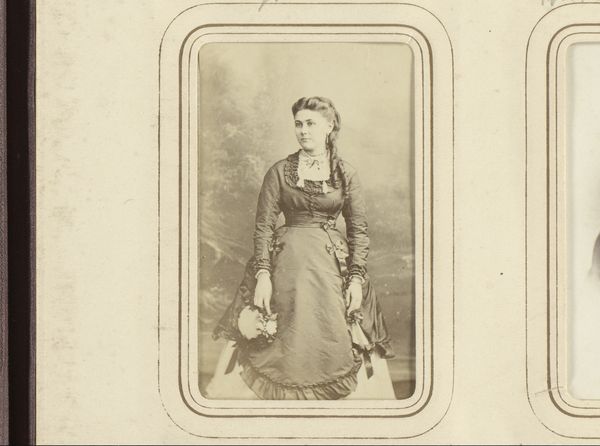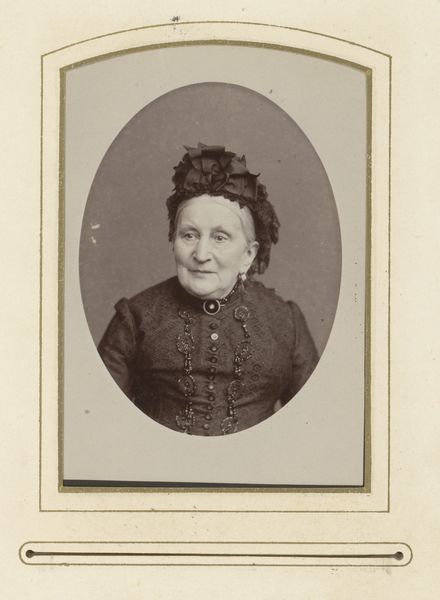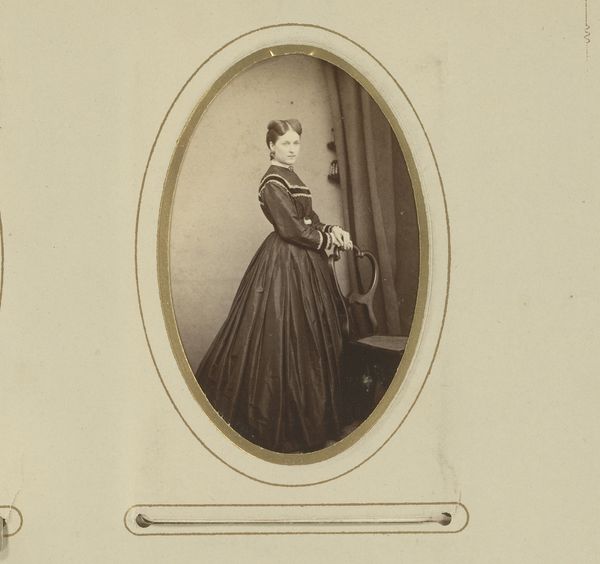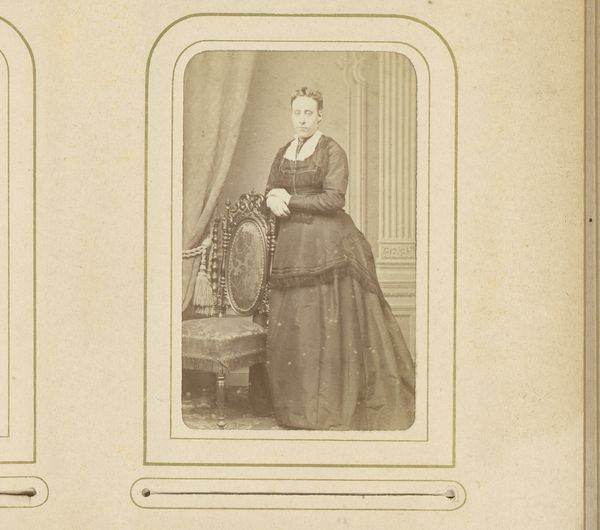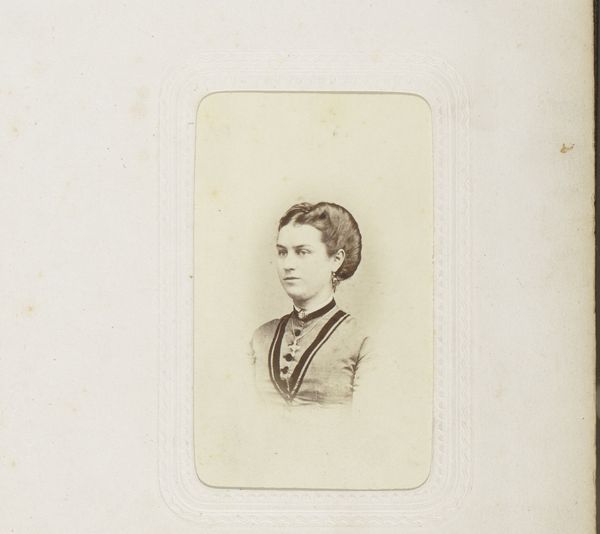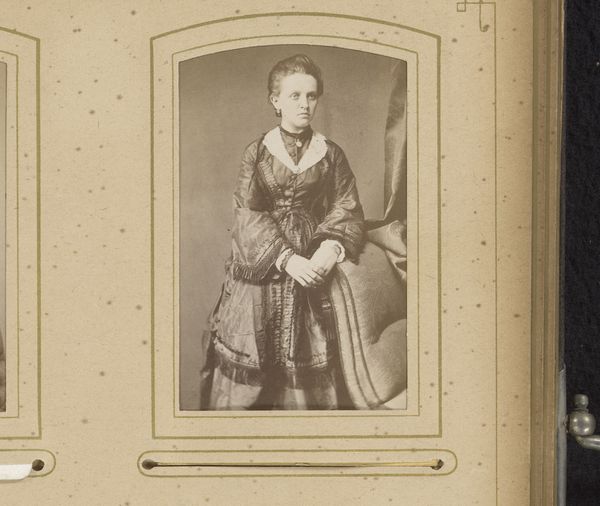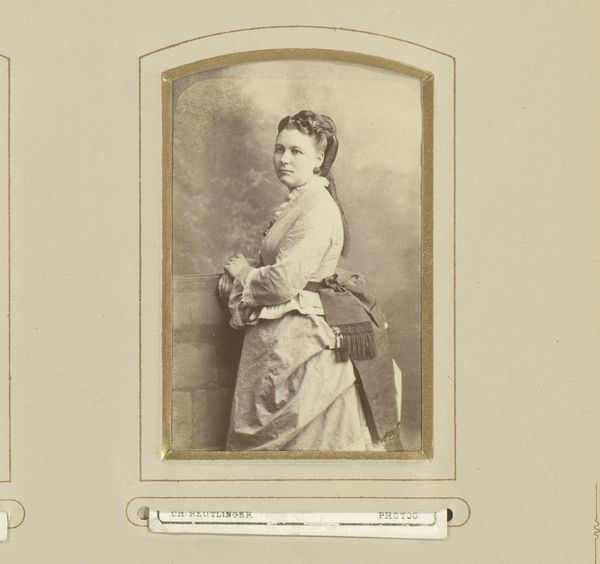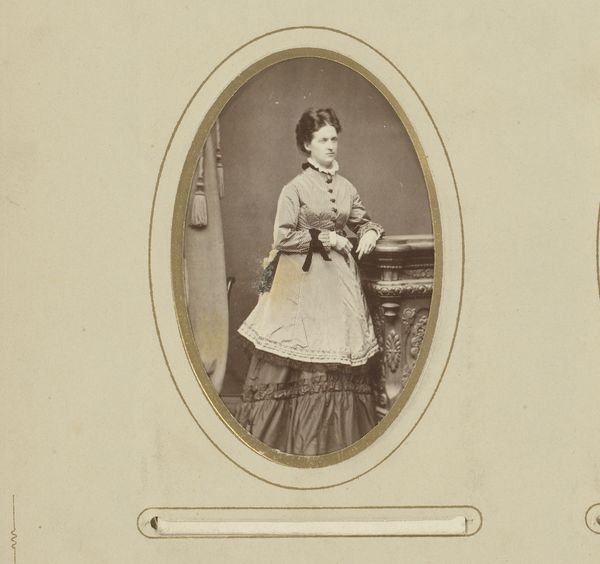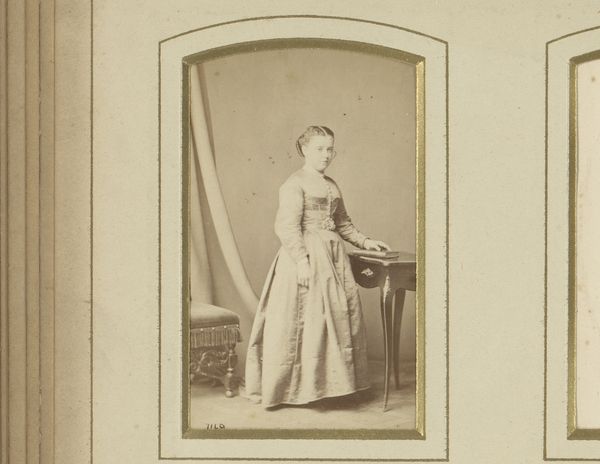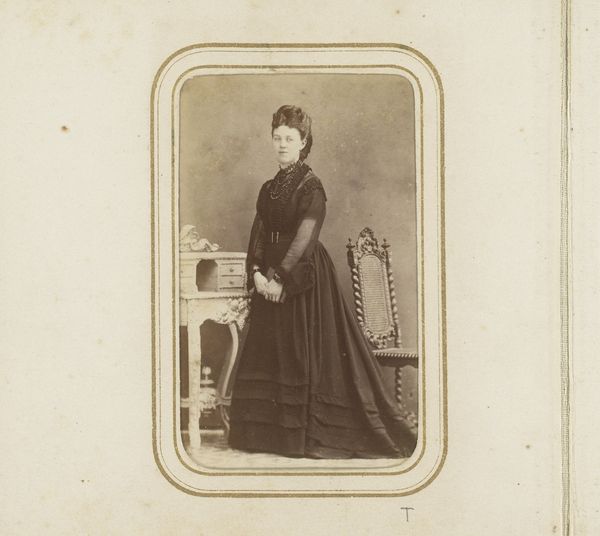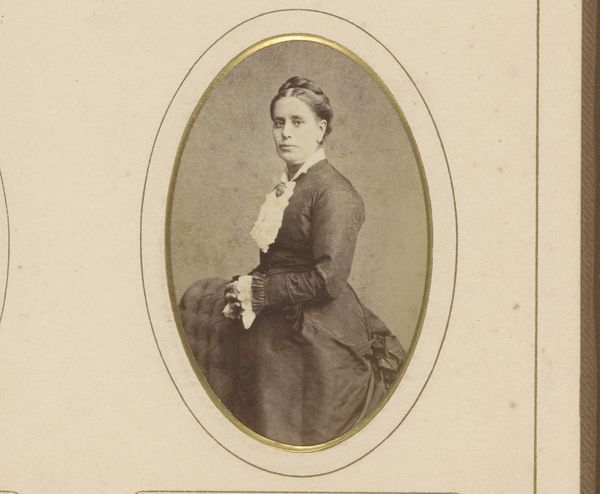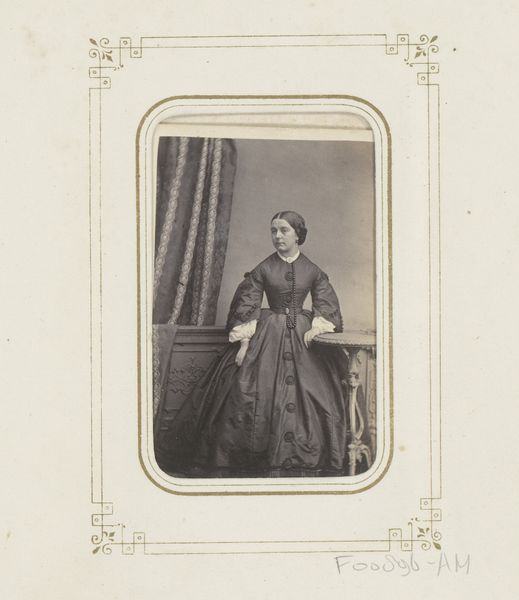
Dimensions: height 81 mm, width 52 mm
Copyright: Rijks Museum: Open Domain
Editor: Here we have "Portret van een jonge vrouw bij een zuil," or "Portrait of a Young Woman by a Column," a photograph by Wilhelm Zink, created sometime between 1863 and 1900. It has a dreamy, romantic feel to it, I think. How do you interpret this work within the broader context of nineteenth-century portraiture? Curator: This portrait reflects the growing accessibility of photography in the late 19th century. Studios popped up everywhere, offering a relatively affordable way to capture one's likeness. Consider the subject’s pose and dress, hinting at bourgeois aspirations—do you notice anything about the column or backdrop itself? Editor: Now that you mention it, the column and drapery behind her seem staged. Like she's trying to align herself with classicism, even if it's just a set piece? Curator: Precisely. It speaks to the democratizing influence of photography on portraiture, blurring the lines between aristocratic representation and the emerging middle class desire for similar markers of status. How do you see the political role of imagery at play? Editor: Hmmm... I guess photography let ordinary people perform an elevated social status, projecting an image of respectability or even grandeur? Curator: Exactly. And this performance, replicated across countless studios, shaped the visual culture of the time and shifted notions of identity and social mobility. Now what I find interesting about this is how this seemingly static, even traditional image was in fact extremely disruptive for traditional power structures. Editor: Wow, that's not something I had considered! So, beyond its surface appeal, it captures a society in transition? Curator: Indeed! It's a window into the changing landscape of class and self-representation in the late 19th century. It shows that even a portrait can make you think deeper. Editor: This gives me a whole new perspective. Thanks!
Comments
No comments
Be the first to comment and join the conversation on the ultimate creative platform.

